
Fast, affordable Internet access for all.

Alabama has announced the release of $148.3 million in new broadband grants via the state’s Capital Projects Fund (CPF), made possible by the 2021 American Rescue Plan Act (ARPA). While regional monopolies like Charter nabbed the lion’s share of state funding (once again), cooperatives also secured significant funding to tackle the rural digital divide.
“High-speed internet service continues to strengthen and expand across the state, and we are taking the necessary strides on this journey to achieve full broadband access for Alabama,” Alabama Governor Kay Ivey said in a prepared statement. “This has been a monumental task, but it is one that will pay multiple dividends for our state and its residents. Today is an exciting day as we announce these latest projects.”
Cable giant Charter Communications (Spectrum) was the biggest winner of state funds, awarded 23 grants totaling $44.8 million to shore up access to 22,000 underserved homes across 25 Alabama counties. The next biggest award recipient was Mediacom, which received $22.8 million in grants to fund deployment to 8,000 homes across six Alabama counties.

All told, 16 providers were awarded grants to expand access to 48 different Alabama counties. While regional monopolies were heavily represented in the awards, four different Alabama cooperatives received $34.8 million in grant funding to expand fiber access to more than 11,092 rural Alabama homes and businesses.
Colorado has long been home to some of the most innovative municipal broadband projects in the country. That trend has only accelerated with last year’s voter-approved elimination of municipal broadband restrictions, and it’s now being buoyed by a massive new wave of state grants that should further expand affordable broadband to long-neglected parts of the state.
Colorado Gov. Jared Polis recently announced the first of multiple broadband investments using stimulus funding from the U.S. Treasury’s Capital Projects Fund (CPF) program. The CPF is funded by $10 billion made possible by the American Rescue Plan Act (ARPA), and is a key part of the state’s goal to bring affordable broadband to 99 percent of Colorado residents by 2027.
According to the Governor’s office, the state just authorized $113 million in CPF funds on 13 projects that will bring fiber service to nearly 19,000 homes and businesses across Colorado. State officials say the funding will be heavily focused on projects in the South and Southwest portion of the Centennial State, where connectivity needs are greatest.
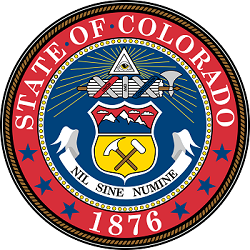
The Colorado Broadband Office says it received 112 applications asking for more than $642 million in broadband funding across the state–five times greater than the allotted awards.
Yesterday, New York Gov. Kathy Hochul announced a $228 million infusion of federal funds the Empire State will earmark for its recently established Municipal Infrastructure Program (MIP).
Created as part of New York’s billion dollar ConnectALL Initiative, the MIP is specifically designed to support municipal broadband projects, which have shown to be a viable, and increasingly popular, way to bring affordable, high-quality Internet service to an entire community.
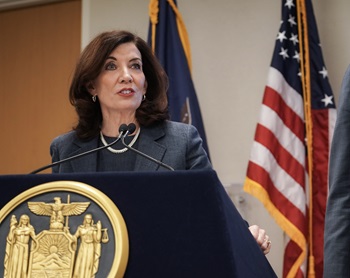
New York is a notable exception to what most other states are doing as those states prepare to funnel the lion’s share of its federal broadband funds to the big incumbent providers with scant, if any, support for publicly-owned broadband projects. In New York – similar to states like Maine, Vermont, and California – state leaders are devoting a significant chunk of federal funds, all $228 million of its recent disbursement of Capital Projects Funds, to build publicly-owned, open access networks.
“Broadband infrastructure in the Municipal Infrastructure Program will be owned by a public entity or publicly controlled, and Internet Service Providers will use the new broadband infrastructure to provide New Yorkers with affordable, high quality service options,” the press announcement said.
The Idaho Broadband Advisory Board (BAB) has greenlit $120 million in broadband grants from the Idaho Capital Projects Fund (CPF) to fund 18 different broadband projects across Idaho, delivering affordable fiber access to 30,000 homes and businesses, many for the first time.
It’s the latest round of funding made possible by the American Rescue Plan Act, passed in 2021 to help soften the impact of COVID. A breakdown of the finalized awards indicate 18 different providers received funding from BAB, including a $9.8 million award to Comcast and more than $11 million to Ziply Fiber.
“These awarded projects are another important step in furthering the Idaho Broadband Advisory Board’s mission of ensuring that all Idahoans have access to affordable and reliable internet,” Idaho Broadband Advisory Board Chair, Representative John Vander Woude said in a prepared statement. “These projects will connect homes and businesses across the entire State.”
Seven of the award recipients were individual counties pursuing varying options to shore up access to largely rural unserved and underserved residents.
Blue River, Colorado (est. pop. 882) is the latest Colorado municipality to explore building its own broadband network with an eye on affordable access. The town is part of a trend that’s only accelerated since the state eliminated industry-backed state level protections restricting community-owned broadband networks.
Just south of Breckenridge in the central part of the state, Blue River is nestled in one of the more rural parts of Summit County. Comcast (Xfinity) enjoys a broadband monopoly, resulting in spotty access, slow speeds, and high prices. Locals also routinely complain that cell phone service remains spotty in much of the mountainous area.
In response, town leaders recently hired the consulting firm, NEO Connect, to explore the possibility of building a town-wide fiber network. According to a feasibility study presented to the Blue River Board of Trustees by Mayor Toby Babich, the construction of a fiber network serving every town resident will cost somewhere in the neighborhood of $13 million.
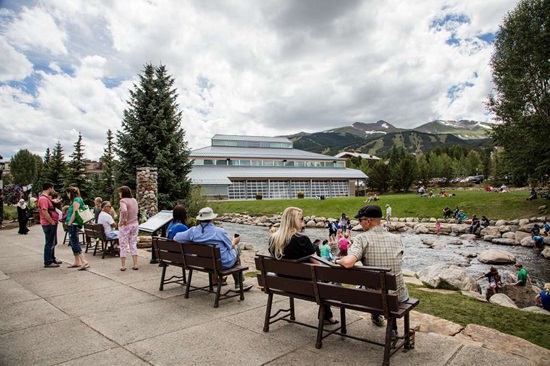
While that “may seem out of reach,” Babich recently told the board, “we believe with the right funding and partnership we can move forward with this project.”
The estimates for network construction range somewhere between $7 million to $24 million, depending on how much underground trenching work is required.
Butler Electric Cooperative and its Velocity broadband subsidiary say they’re making meaningful progress in bringing fixed wireless access (FWA) — and ultimately fiber optic broadband — to long-neglected sections of rural south-central Kansas. It’s the latest example of electrical cooperatives playing a leading role in the longstanding quest to bridge the digital divide.
Butler Electric Cooperative, which provides electrical service to 7,000 meters via 1,850 miles of transmission and distribution lines, created Velocity in 2018 as part of the cooperative’s expansion into broadband access.
The service currently provides fixed wireless access to roughly 5,500 rural Kansas residents, long left out of reach of traditional cable, fiber, or DSL due to the logistical challenges and high cost of rural deployment.
The company’s current service tiers range from a 15 megabit per second (Mbps) downstream and 3 Mbps upstream tier for $60 a month, to a 100 Mbps downstream, 10 Mbps upstream tier for $84 a month. Both tiers feature a one-time installation fee of $200. The higher pricing generally reflects the higher prices of deployment to remote, rural areas.
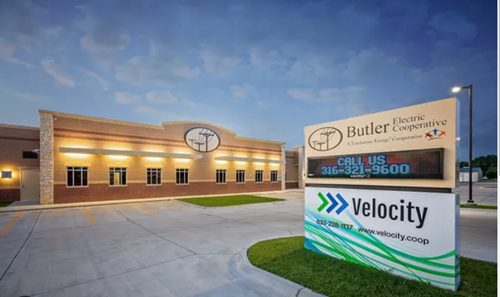
Velocity CEO Kevin Brownless tells Telecompetitor that the company tries to keep consumer-facing pricing as close to cost as possible, and that Velocity and Butler plan to drive fiber into these markets over the coming years thanks to federal subsidies.
The key for states to unlock their portion of the $42.5 billion in federal BEAD funds is the submission and approval of their Five Year Action Plans and Final Proposal. The infrastructure law requires states to first file an action plan, and then prepare more detailed Initial Proposals, allowing residents and stakeholders to submit public comments.
So far, 14 states have filed their Five Year Action Plans with the National Telecommunications and Information Administration (NTIA), the Treasury Department agency in charge of allocating the funds to each state and U.S. territory. According to the NTIA’s website, Maine, Louisiana, Delaware, Georgia, Hawaii, Idaho, Kansas, Montana, North Carolina, Ohio, Oregon, Pennsylvania, Utah, and Vermont have all filed their draft Five Year Action Plans.
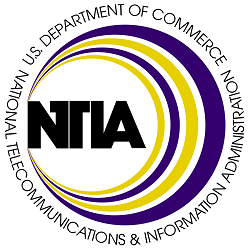
The states that are now in the process of completing their Initial Proposals include: Delaware, Kansas, Louisiana, Montana, Ohio, Tennessee, Vermont, Virginia and Wyoming.
Today, we will look at two states (Maine and Louisiana) and follow up with the others as we are getting a clearer picture of how each state intends to put this historic infusion of federal funds to use.
Maine
Allegan County, Michigan will soon receive a $30 million state grant to finalize the deployment of a new open access, carrier-neutral fiber network. The end result will bring overdue competition – and affordable multi-gigabit fiber access – to long neglected communities by 2025.
The $30 million award is part of Michigan’s $238 million Realizing Opportunity with Broadband Infrastructure Networks (ROBIN) grant program, made possible by 2021’s American Rescue Plan Act (ARPA) and the resulting Capital Projects Fund.
123NET was chosen by Allegan County in late 2021 to help spearhead the Allegan County Broadband Project. The public-private partnership will bring access to more than 10,000 Allegan County residents either underserved or completely unserved by regional telecom giants, spread out across 1,000 square miles.
123NET and Allegan County had already committed to contributing $17.5 million for the construction of the network, with the county’s share coming from earlier ARPA awards.
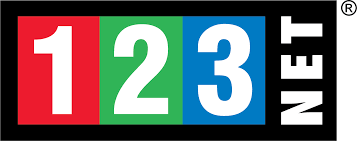
"We are pleased to be selected as a recipient of the Michigan ROBIN Grant Funding. This recognition validates the hard work and dedication that both we and Allegan County have put into this Project,” Dan Irvin, CEO of 123NET said of the award. “We look forward to partnering with additional communities throughout Michigan in a combined effort to make this state the best connected on the planet."
The Port Of Whitman County is one of several rural Washington communities set to nab another major infusion of broadband grants courtesy of federal Covid disaster relief. A fresh infusion of $1.1 million announced last week will help the County expand a five city (Palouse, Garfield, Oakesdale, Tekoa and Rosalia) fiber expansion project to 104 unserved homes.
In partnership with Ziply Fiber, the Port will bring fiber connectivity to those homes that were not included in the first phase of the project. According to city officials, construction will begin in the fall 2023 and be complete by spring 2024.

It’s part of a broader $121 million in new broadband grant awards doled out by the Washington State Broadband Office to expand access to affordable broadband service across traditionally underserved portions of the state. All told, the new awards will be used to fund more than 19 different projects, bringing improved broadband access to nearly 15,000 state residents.
“These grants will provide initial service availability to 14,794 end users located across the state, in communities as diverse as the San Juan Islands, Kittitas County and the Spokane reservation,” Washington Broadband Office Director Mark Vasconi said of the latest round of funding.
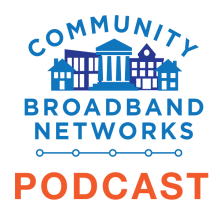
This week on the podcast, Christopher speaks with Joey Wender, Director of the Capital Projects Fund (CPF), U.S Department of the Treasury. Joey administers the $10 billion fund targeted to help close the digital divide.
Joey and Chris discuss the flexibility of CPF funding and how it allows states to tailor their plans to their own needs. The two also talk about the importance of replenishing funding for the Affordable Connectivity Program (ACP) and how it’s critical to take action on this now, before the fund actually runs out.
This show is 22 minutes long and can be played on this page or via Apple Podcasts or the tool of your choice using this feed.
Transcript below.
We want your feedback and suggestions for the show-please e-mail us or leave a comment below.
Listen to other episodes here or view all episodes in our index. See other podcasts from the Institute for Local Self-Reliance here.
Thanks to Arne Huseby for the music. The song is Warm Duck Shuffle and is licensed under a Creative Commons Attribution (3.0) license.